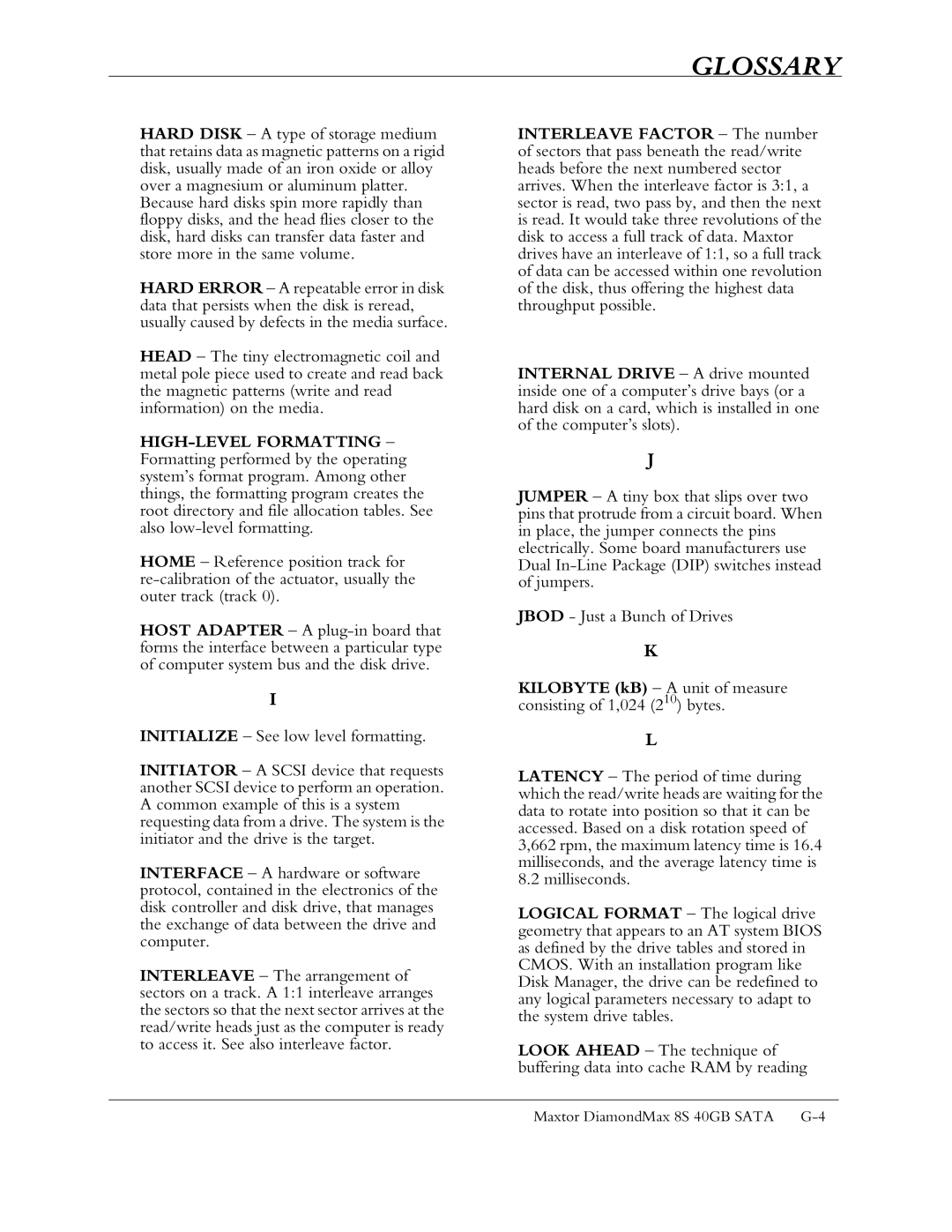
GLOSSARY
HARD DISK – A type of storage medium that retains data as magnetic patterns on a rigid disk, usually made of an iron oxide or alloy over a magnesium or aluminum platter. Because hard disks spin more rapidly than floppy disks, and the head flies closer to the disk, hard disks can transfer data faster and store more in the same volume.
HARD ERROR – A repeatable error in disk data that persists when the disk is reread, usually caused by defects in the media surface.
HEAD – The tiny electromagnetic coil and metal pole piece used to create and read back the magnetic patterns (write and read information) on the media.
HOME – Reference position track for
HOST ADAPTER – A
I
INITIALIZE – See low level formatting.
INITIATOR – A SCSI device that requests another SCSI device to perform an operation. A common example of this is a system requesting data from a drive. The system is the initiator and the drive is the target.
INTERFACE – A hardware or software protocol, contained in the electronics of the disk controller and disk drive, that manages the exchange of data between the drive and computer.
INTERLEAVE – The arrangement of sectors on a track. A 1:1 interleave arranges the sectors so that the next sector arrives at the read/write heads just as the computer is ready to access it. See also interleave factor.
INTERLEAVE FACTOR – The number of sectors that pass beneath the read/write heads before the next numbered sector arrives. When the interleave factor is 3:1, a sector is read, two pass by, and then the next is read. It would take three revolutions of the disk to access a full track of data. Maxtor drives have an interleave of 1:1, so a full track of data can be accessed within one revolution of the disk, thus offering the highest data throughput possible.
INTERNAL DRIVE – A drive mounted inside one of a computer’s drive bays (or a hard disk on a card, which is installed in one of the computer’s slots).
J
JUMPER – A tiny box that slips over two pins that protrude from a circuit board. When in place, the jumper connects the pins electrically. Some board manufacturers use Dual
JBOD - Just a Bunch of Drives
K
KILOBYTE (kB) – A unit of measure consisting of 1,024 (210) bytes.
L
LATENCY – The period of time during which the read/write heads are waiting for the data to rotate into position so that it can be accessed. Based on a disk rotation speed of 3,662 rpm, the maximum latency time is 16.4 milliseconds, and the average latency time is 8.2 milliseconds.
LOGICAL FORMAT – The logical drive geometry that appears to an AT system BIOS as defined by the drive tables and stored in CMOS. With an installation program like Disk Manager, the drive can be redefined to any logical parameters necessary to adapt to the system drive tables.
LOOK AHEAD – The technique of buffering data into cache RAM by reading
Maxtor DiamondMax 8S 40GB SATA
